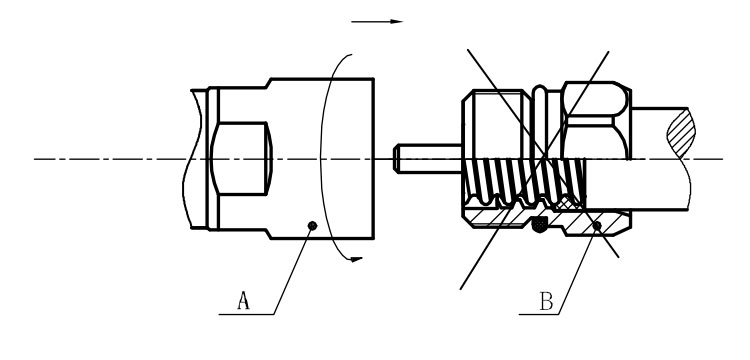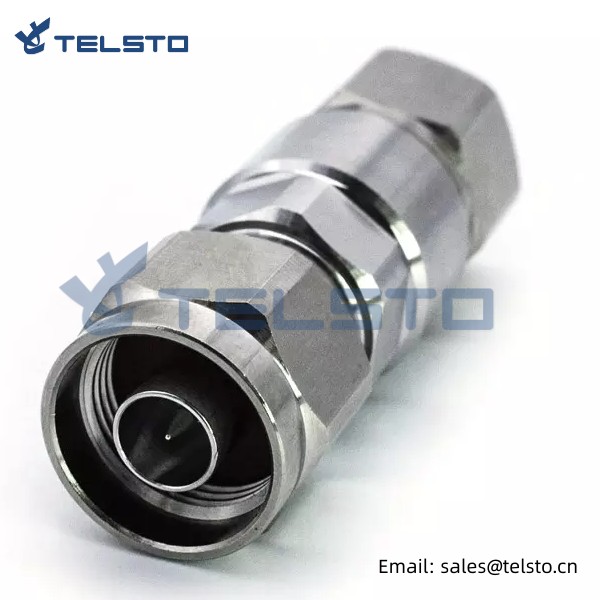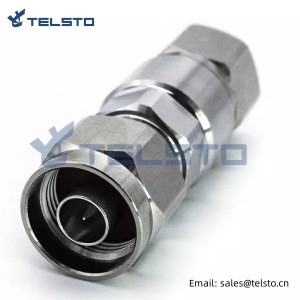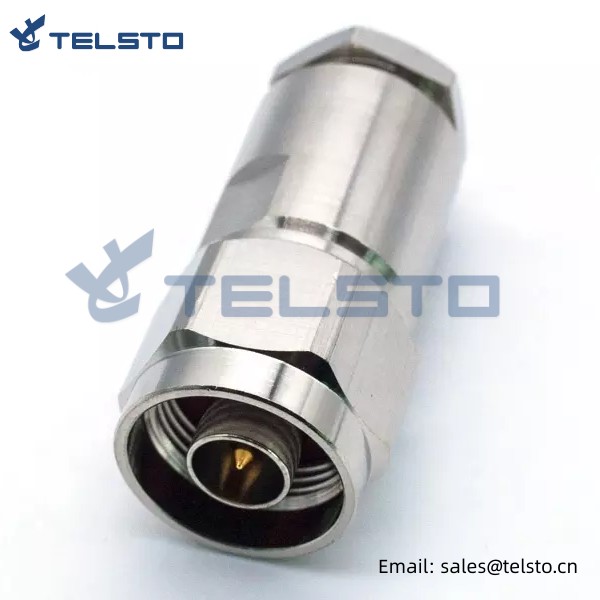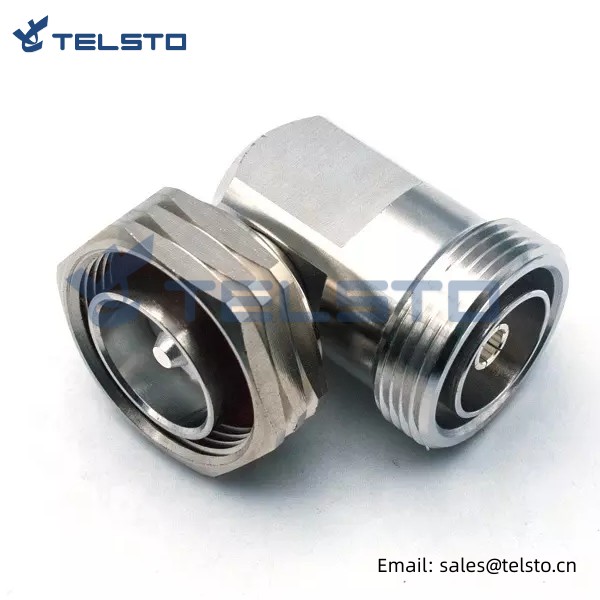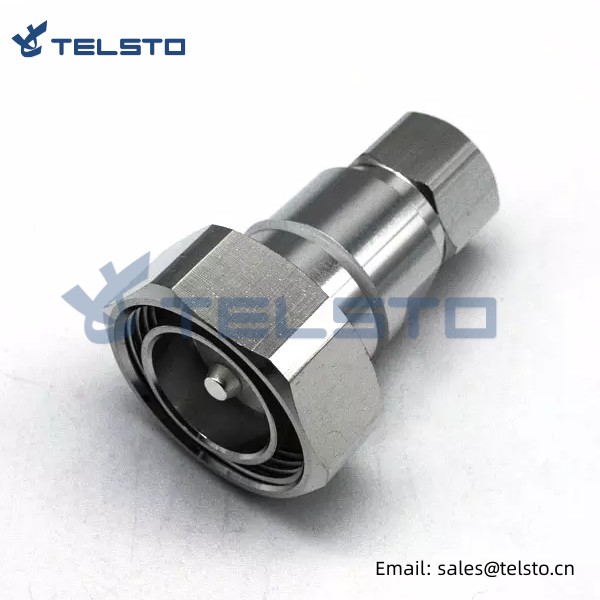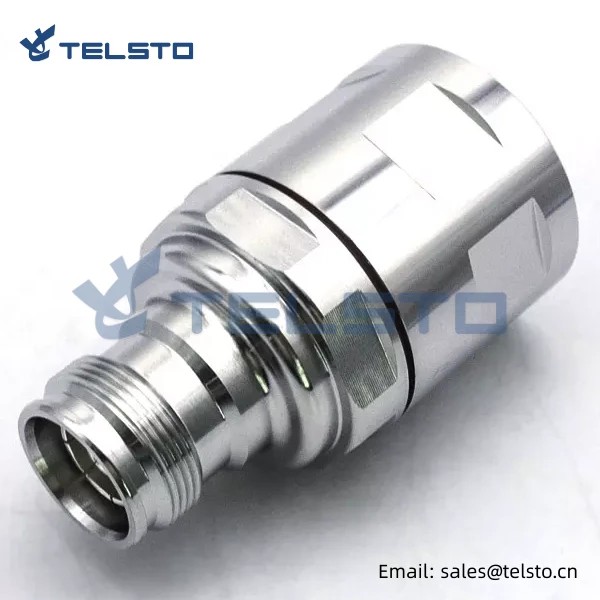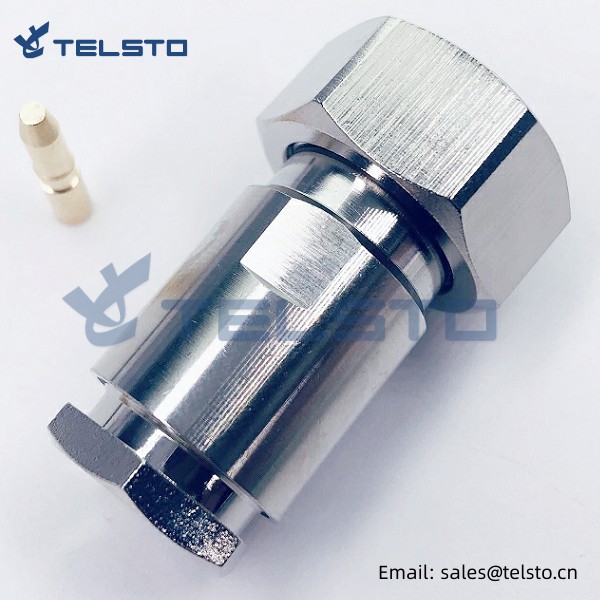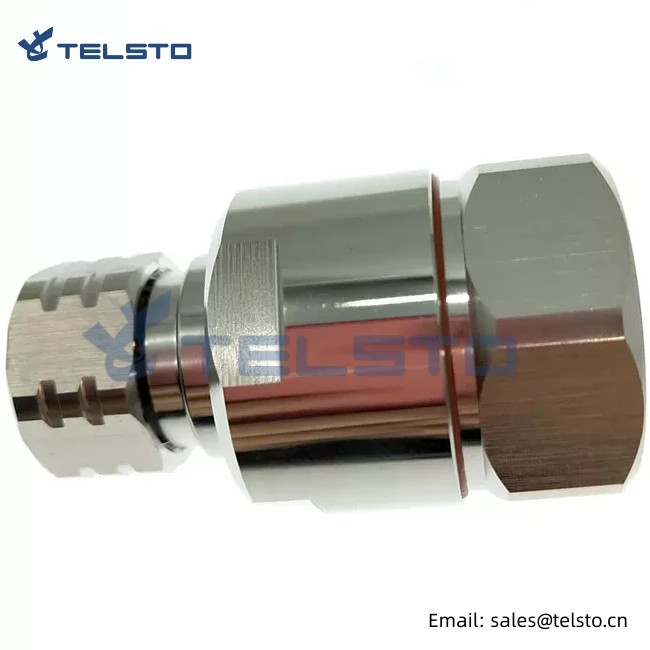N Male connector for 1/2″ Super flexible RF cable
N Male connector straight clamp for 1/2" Super flexible RF cable
RF connectors are typically used with coaxial cables and are designed to maintain the shielding that the coaxial design offers. RF connectors of various types are generally used for wireless functions.
N connectors are available with the impedance of 50ohm and 75ohm. The frequency range extends to 18GHz. Depending on the connector and cable type. The screw-type coupling mechanism provides a sturdy and reliable connection. Connector styles are available for flexible, conformable, semi-rigid and corrugated cable types. Both crimp and clamp cable termination processes are used for this series.
Applications: Antennas/ Base station /Broad cast /Cable assembly /Cellular /Components /Instrumentation/Microwave Radio/Mil-Aero PCS/Radar /Radios/Satcom /Surge protection WLAN.
| Connector Type | N male connector |
| Impedance | 50ohm |
| Connector Material | Brass |
| Insulators | PTFE |
| Contact Plating | Nickel plated |
| Contact Pin | Brass, Silver plating |
| Crimp ferrules | Copper alloy, nickel plating |
| Features | Weatherproof |
| Mounting Type | Cable mount |
| Connector connection | Threaded connection |
| Cable Models | 1/2" rf coaxial superflex feeder cable |
| Fixed Mode | Screwed |
Product Application
N connectors available with both male and female, are designed and manufactured for GSM, CDMA, TD-SCDMA sites.

Specification
N male connector for 1/2" super flexible coaxial cable
1. The standards of Connectors: In accordance with IEC60169-16
2. Interface screw thread: 5/8-24UNEF-2A3. Material and Plating:
Body: brass, Ni/Au plated
Insulator: Teflon
Inner conductor: bronze, Au plated
4. Working environment
Working temperature: -40~+85℃
Relative moisture: 90%~95%(40±2℃)
Atmospheric pressure: 70~106Kpa
Salt mist: Continuous mist for 48 hours(5% NaCl)
5. Electrical characteristics
Nominal impedance 50Ω
Frequency range: DC-3G
Contact resistance(mΩ): Outer conductor ≤0.25, Inner conductor ≤1
Insulation resistance(MΩ)≥5000
Withstanding voltage AC(V/min)2500
VSWR(0-3GHz) ≤1.10

FAQ
What about your quality?
All products we supply are strictly tested by our QC department or third party inspection standard or better before shipment. Most of goods such as coaxial jumper cables, passive devices, etc. are 100% tested.
Can you offer samples to test before placing formal order?
Sure, free samples can be provided. We are also glad to support our clients to develop new products together to help them to develop the local market.
Do you accept customization?
Yes, we are customizing products according to the customer’s requirements.
How long is the delivery time?
Usually we keep stocks, so delivery is fast. For bulk orders, it will be up to the demand.
What is the shipping methods?
Flexible shipping methods per customer’s urgency, such as DHL, UPS, Fedex, TNT, by air, by sea are all acceptable.
Can our logo or company name can be printed on your products or the packages?
Yes, OEM service is available.
Is the MOQ fixed?
MOQ is flexible and we accept small order as trial order or sample testing.
Related
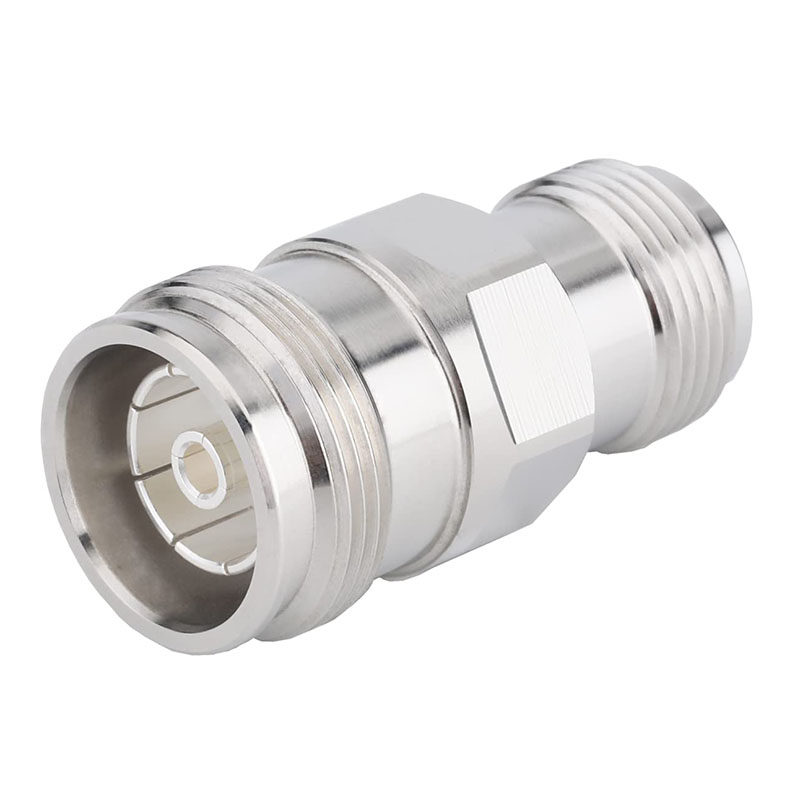
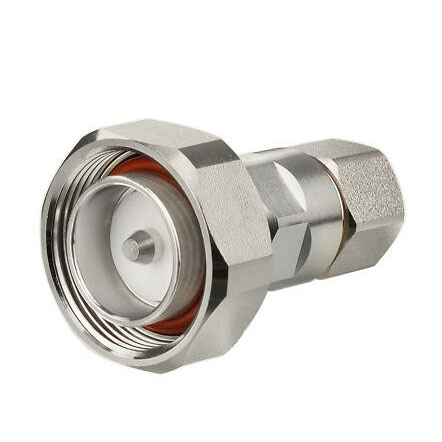
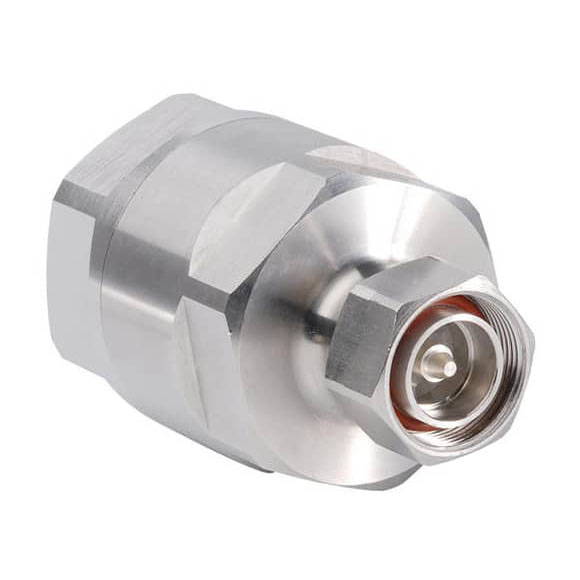
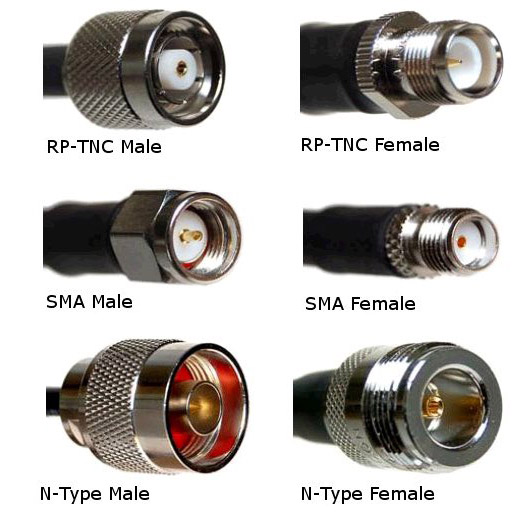
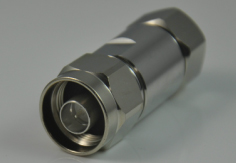
Model: TEL-NM.12S-RFC
Description
N Male connector for 1/2″ Superflexible RF cable
| Material and Plating | |
| Center contact | Brass / Silver Plating |
| Insulator | PTFE |
| Body & Outer Conductor | Brass / alloy plated with tri-alloy |
| Gasket | Silicon Rubber |
| Electrical Characteristics | |
| Characteristics Impedance | 50 Ohm |
| Frequency Range | DC~3 GHz |
| Insulation Resistance | ≥5000MΩ |
| Dielectric Strength | ≥2500 V rms |
| Center contact resistance | ≤1.0 mΩ |
| Outer contact resistance | ≤1.0 mΩ |
| Insertion Loss | ≤0.12dB@3GHz |
| VSWR | ≤1.08@-3.0GHz |
| Temperature range | -40~85℃ |
| PIM dBc(2×20W) | ≤-160 dBc(2×20W) |
| Waterproof | IP67 |
Installation Instructions of N or 7 / 16 or 4310 1 / 2″ super flexible cable
Structure of connector: ( Fig1 )
A. front nut
B. back nut
C. gasket
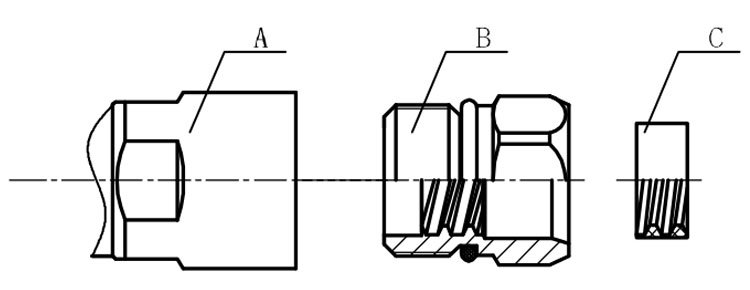
Stripping dimensions is as shown by diagram ( Fig2 ), attention should be paid while stripping:
1. The end surface of inner conductor should be chamfered.
2. Remove impurities such as copper scale and burr on the end surface of the cable.
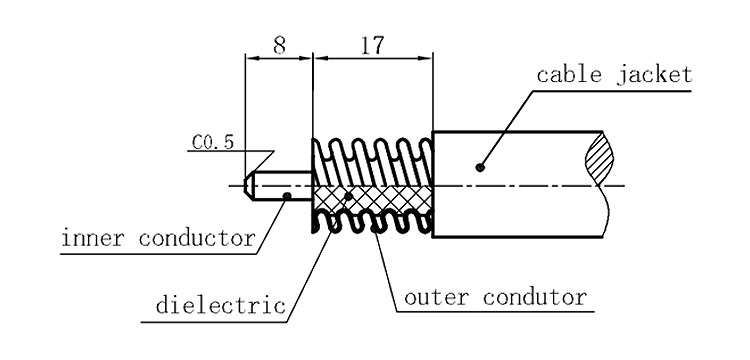
Assembling the sealing part: Screw the sealing part in along the outer conductor of the cable as shown by the diagram ( Fig3).
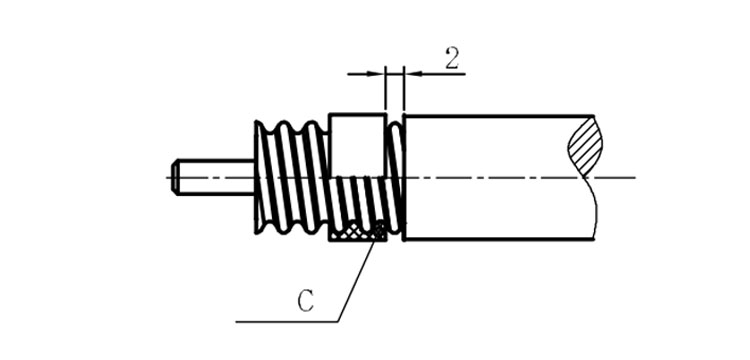
Assembling the back nut (Fig3).
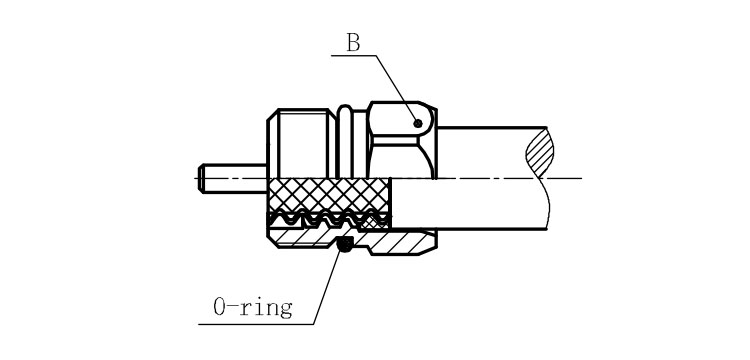
Combine the front and back nut by screwing as shown by diagram ( Figs( 5)
1. Before screwing, smear a layer of lubricating grease on the o-ring.
2. Keep the back nut and the cable motionless, Screw on main shell body on back shell body. Screw down main shell body of back shell body using monkey wrench. Assembling is finished.
